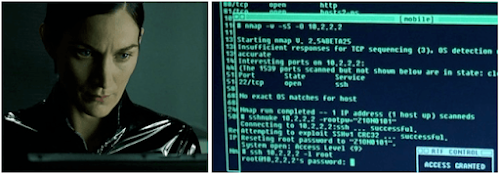The WPScan software (henceforth referred to simply as "WPScan") is dual-licensed - Copyright 2011-2015 WPScan Team. Cases that include commercialization of WPScan require a commercial, non-free license. Otherwise, WPScan can be used without charge under the terms set out below.
1. Definitions
1.1 "License" means this document.
1.2 "Contributor" means each individual or legal entity that creates, contributes to the creation of, or owns WPScan.
1.3 "WPScan Team" means WPScan’s core developers, an updated list of whom can be found within the CREDITS file.
2. Commercialization
A commercial use is one intended for commercial advantage or monetary compensation.
Example cases of commercialization are:
Using WPScan to provide commercial managed/Software-as-a-Service services. Distributing WPScan as a commercial product or as part of one.
Using WPScan as a value added service/product. Example cases which do not require a commercial license, and thus fall under the terms set out below, include (but are not limited to): Penetration testers (or penetration testing organizations) using WPScan as part of their assessment toolkit. Penetration Testing Linux Distributions including but not limited to Kali Linux, SamuraiWTF, BackBox Linux. Using WPScan to test your own systems. Any non-commercial use of WPScan. If you need to purchase a commercial license or are unsure whether you need to purchase a commercial license contact us - team@wpscan.org. We may grant commercial licenses at no monetary cost at our own discretion if the commercial usage is deemed by the WPScan Team to significantly benefit WPScan. Free-use Terms and Conditions;
3. Redistribution
Redistribution is permitted under the following conditions: Unmodified License is provided with WPScan. Unmodified Copyright notices are provided with WPScan. Does not conflict with the commercialization clause.
4. Copying
Copying is permitted so long as it does not conflict with the Redistribution clause.
5. Modification
Modification is permitted so long as it does not conflict with the Redistribution clause.
6. Contributions
Any Contributions assume the Contributor grants the WPScan Team the unlimited, non-exclusive right to reuse, modify and relicense the Contributor's content.
7. Support
WPScan is provided under an AS-IS basis and without any support, updates or maintenance. Support, updates and maintenance may be given according to the sole discretion of the WPScan Team.
8. Disclaimer of Warranty
WPScan is provided under this License on an “as is†basis, without warranty of any kind, either expressed, implied, or statutory, including, without limitation, warranties that the WPScan is free of defects, merchantable, fit for a particular purpose or non-infringing.
9. Limitation of Liability
To the extent permitted under Law, WPScan is provided under an AS-IS basis. The WPScan Team shall never, and without any limit, be liable for any damage, cost, expense or any other payment incurred as a result of WPScan's actions, failure, bugs and/or any other interaction between WPScan and end-equipment, computers, other software or any 3rd party, end-equipment, computer or services.
10. Disclaimer
Running WPScan against websites without prior mutual consent may be illegal in your country. The WPScan Team accept no liability and are not responsible for any misuse or damage caused by WPScan.
Install
Ruby >= 1.9.2 - Recommended: 2.2.2
Curl >= 7.21 - Recommended: latest - FYI the 7.29 has a segfault
RubyGems
Git
gem typhoeus
gem nokogiri
git clone https://github.com/wpscanteam/wpscan.git
WPSCAN ARGUMENTS
--update Update the databases.
--url | -u
--force | -f Forces WPScan to not check if the remote site is running WordPress.
--enumerate | -e [option(s)] Enumeration.
option :
u usernames from id 1 to 10
u[10-20] usernames from id 10 to 20 (you must write [] chars)
p plugins
vp only vulnerable plugins
ap all plugins (can take a long time)
tt timthumbs
t themes
vt only vulnerable themes
at all themes (can take a long time)
Multiple values are allowed : "-e tt,p" will enumerate timthumbs and plugins
If no option is supplied, the default is "vt,tt,u,vp"
--exclude-content-based "
You do not need to provide the regexp delimiters, but you must write the quotes (simple or double)
--config-file | -c
--user-agent | -a
--random-agent | -r Use a random User-Agent
--follow-redirection If the target url has a redirection, it will be followed without asking if you wanted to do so or not
--wp-content-dir
--wp-plugins-dir
--proxy <[protocol://]host:port> Supply a proxy (will override the one from conf/browser.conf.json).
HTTP, SOCKS4 SOCKS4A and SOCKS5 are supported. If no protocol is given (format host:port), HTTP will be used
--proxy-auth
--basic-auth
--wordlist | -w
--threads | -t
--username | -U
--usernames
--cache-ttl
--request-timeout
--connect-timeout
--max-threads
--help | -h This help screen.
--verbose | -v Verbose output.
--batch Never ask for user input, use the default behavior.
--no-color Do not use colors in the output.
--log Save STDOUT to log.txt
WPSCAN EXAMPLES
===============================================
Do 'non-intrusive' checks...
ruby wpscan.rb --url www.example.com
Do wordlist password brute force on enumerated users using 50 threads...
ruby wpscan.rb --url www.example.com --wordlist darkc0de.lst --threads 50
Do wordlist password brute force on the 'admin' username only...
ruby wpscan.rb --url www.example.com --wordlist darkc0de.lst --username admin
Enumerate installed plugins...
ruby wpscan.rb --url www.example.com --enumerate p
Run all enumeration tools...
ruby wpscan.rb --url www.example.com --enumerate
Use custom content directory...
ruby wpscan.rb -u www.example.com --wp-content-dir custom-content
Update WPScan's databases...
ruby wpscan.rb --update
Debug output...
ruby wpscan.rb --url www.example.com --debug-output 2>debug.log
===============================================
PROJECT HOME : http://www.wpscan.org
VULNERABILITY DATABASE : https://wpvulndb.com
GIT REPOSITORY : https://github.com/wpscanteam/wpscan
ISSUES : https://github.com/wpscanteam/wpscan/issues
DEVELOPER DOCUMENTATION : http://rdoc.info/github/wpscanteam/wpscan/frames
SPECIAL THANKS : RandomStorm



